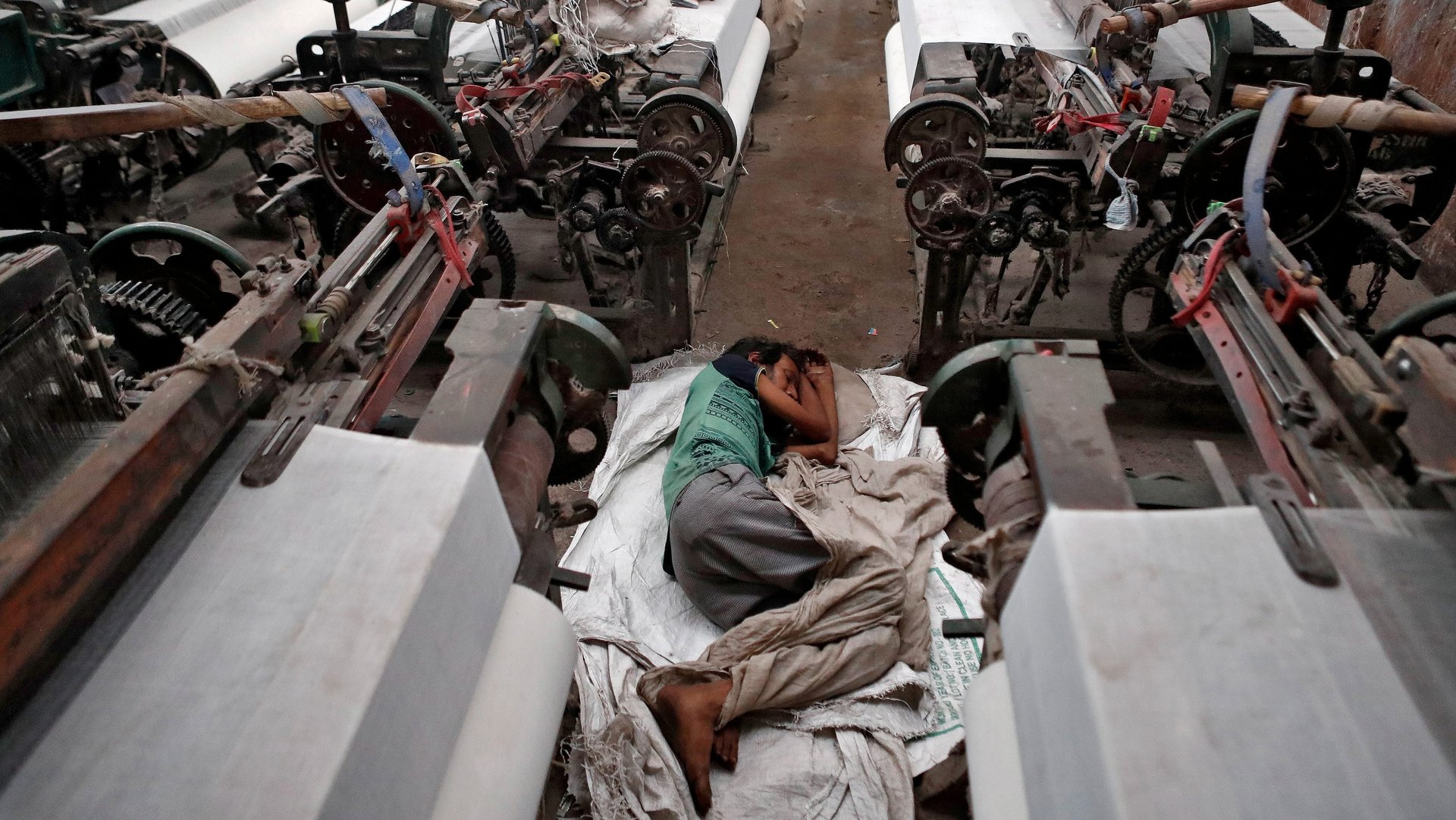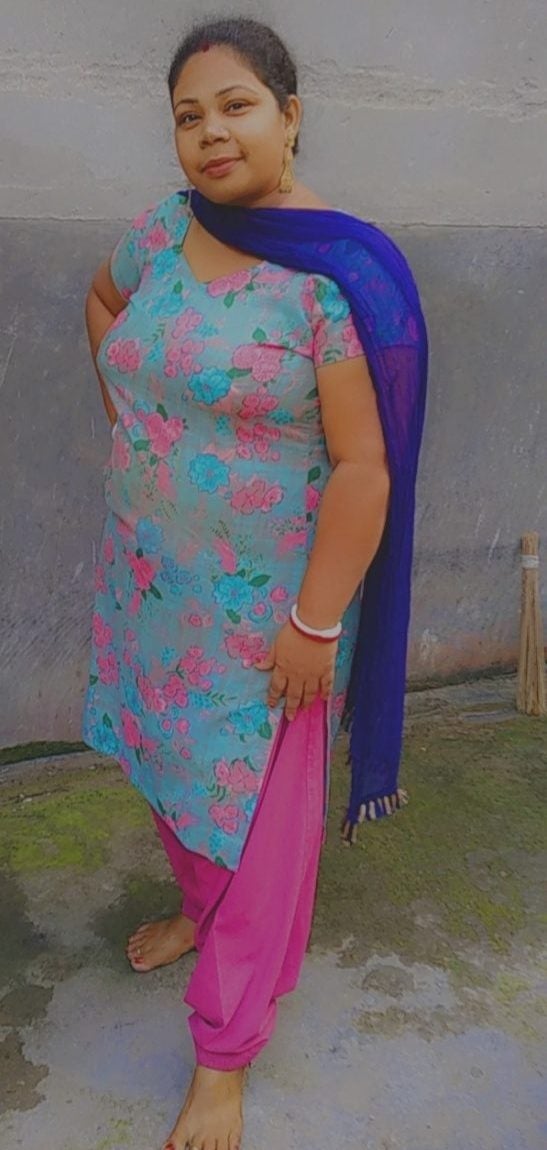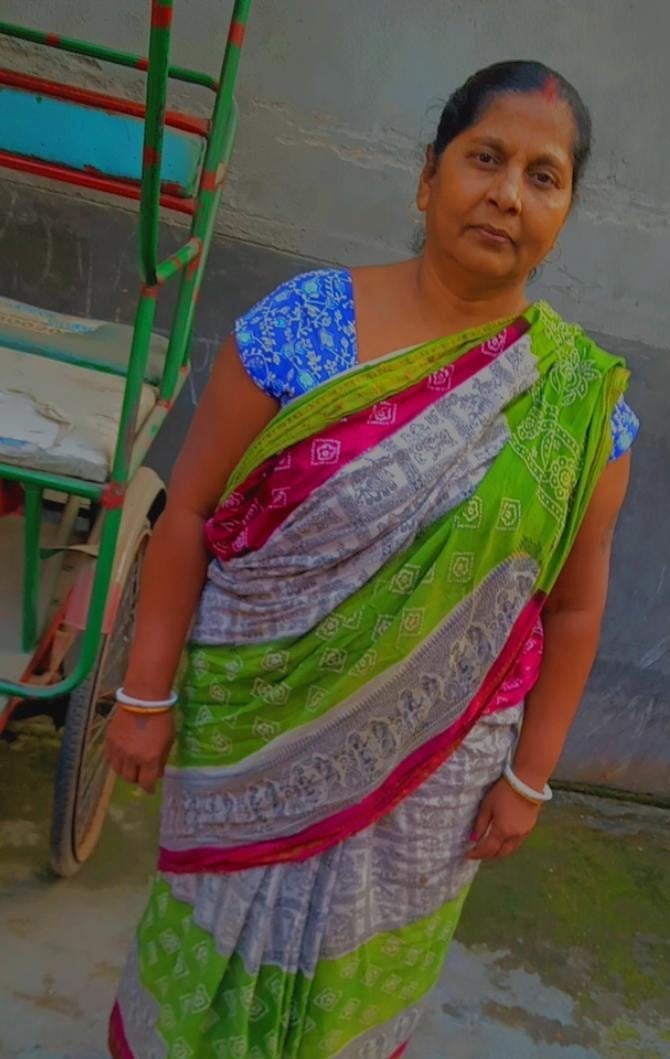One year since the world’s harshest lockdown, Indians want a “vaccine for poverty”
A year since the day India went into an abrupt lockdown to stop the spread of coronavirus, life has gone back to normal for most urban middle-class Indians—who have started going back to offices and flocking restaurants on weekends—but for a host of the country’s population, the new normal is continuing to be a never-ending nightmare.


A year since the day India went into an abrupt lockdown to stop the spread of coronavirus, life has gone back to normal for most urban middle-class Indians—who have started going back to offices and flocking restaurants on weekends—but for a host of the country’s population, the new normal is continuing to be a never-ending nightmare.
Take for example Champa, a 35-year-old domestic helper who hails from a remote village in the eastern Indian state of West Bengal, who migrated to Noida on the outskirts of New Delhi in 2016 in the hope of a better life. “I wouldn’t say we had a life of our dreams but it was comfortable,” Champa says recalling the first four years of her stay in Noida. “I used to work at five households as extra help for cleaning and cooking. I alone could earn up to Rs15,000 ($206). While my husband, a rickshaw puller, could make up to Rs300 a day and Rs500 on some good days.”

But on March 25, when the Narendra Modi government implemented a stringent lockdown, Champa and her husband could not go to work for over 70 days. Even after the lockdown lifted, life was not the same.
“We don’t have any work now. Some of the houses that I used to work at had to cut down on their expenses while some of my employers have gone back to their hometowns. Deb is also struggling for work,” she says. Their unemployment could result in their 16-year-old daughter dropping out of school.
“More than half of what we used to earn, we sent back home to my village so that my daughter could study and have a comfortable life. What do I send her now? I can’t even afford three meals a day,” Champa says. “We can’t even go back. What do I go back to?”
Around 18 million salaried Indians lost their jobs in a span of just four months due to the lockdown and the pandemic-triggered slump that followed, according to the data released by Mumbai-based think tank Centre for Monitoring Indian Economy in August 2020. It’s been worse for people like Champa and Deb. As per an estimate by the Action Aid Association, a Delhi-based NGO, around 80% of the informal workforce (pdf) in India lost their jobs during the countrywide shutdown.
While the data are alarming, the stories behind the figures are far more disheartening.
Lockdown’s financial burdens
Inspired by the success of India’s tech startup industry, over the last few years, a host of young Indians decided to give up their cushy high-paying jobs to become entrepreneurs. When the lockdowns started, these dreams came crashing down.
In 2015, Gaurav Kumar, a sous-chef at a five-star hotel in New Delhi, decided to give up his job and put his entire life’s savings into setting up a street food joint in Uttar Pradesh’s Meerut. When the lockdown started, he was initially not allowed to open his shop, and later when he reopened, there were not many takers as people perceived street food to be unsafe for consumption during a pandemic.
“I carefully planned everything but I could not have anticipated a virus outbreak even in my wildest dreams,” says Kumar. “Now even as the lockdown has lifted, the stigma around street food isn’t letting me earn what I used to.”
The 50-year-old says he has tried several tricks, such as taking up delivery jobs and trying to get food orders online, to keep his family of four afloat. But he isn’t seeing any hope.
“I understand the shutdown was necessary but I also want to understand how do I keep my finances afloat?” says Kumar. “My bank account has been shut because there wasn’t a single penny left in it. Whatever saving I had was spent on keeping the household running.” Kumar now regrets his decision to quit his job.
Coronavirus recovery
Not all those who lost their jobs due to the lockdowns are still unemployed. But the jobs they have had to take up are a stepdown from what they were doing earlier.

Mala Devi, who was working as a cleaner at a beauty salon in New Delhi, was fired as her employer could not afford to keep paying the staff when the business was shut during the lockdown. Once the lockdown ended, Devi knocked on many doors to find a job that paid her the Rs5,000 that she earned in her earlier salon job. While she did find some job openings, they paid lesser than her earlier salary. After waiting for a few weeks to find a better-paying job, she finally started working as a domestic help in a housing society near her home.
“I got a job but at the minimum wage possible. I cannot bargain as I am desperate,” she says.
Meanwhile, her expenses, as the only earning member in her family, have only gone up. For instance, her son needed to buy a smartphone and get a smooth internet connection to attend his online classes. “I do not understand these times. How do I set my priorities right when I am not sure if I’ll be able to put food on the table,” she says.
Will India’s vaccination drive, which began on Jan. 16, offer some hope? At the moment, those above the age of 60 or those over 45 with comorbidities are eligible to get the vaccine. India has vaccinated over 50 million people to date (this should be administered over 53 million shots because some of these are second doses). The government is opening the programme for all those who are over 45 years of age from April 1.
While the vaccine has brought cheer for many, people like Champa and Devi have no hope of their life getting back to normal any time soon.
“They want us to be saved from the virus but the real virus is this poverty, for which sadly, there isn’t any vaccine,” Devi says.